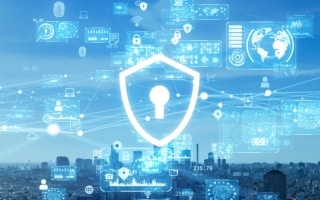EscrowTech Blog
Corporate Escrow Solutions: How EscrowTech & Fortune 500 Companies Work Together
TL;DR: EscrowTech has become a trusted partner to many of the world’s largest organizations by delivering reliable corporate escrow solutions that safeguard mission-critical assets and reduce third-party risk. With decades of experience, industry certifications,...
The Importance of Working with an International Escrow Company
TL;DR: Safeguarding your data and mission-critical software requires more than a domestic escrow arrangement. Because software, cloud services, and teams often span multiple countries, international escrow companies provide the compliance, continuity, and...
Why Third Party Escrow Services Are Crucial
Summary: Third party escrow services protect digital assets like software, SaaS apps, and source code to ensure business continuity and reduce risk. Learn what third party escrow is, who’s involved, why it matters, and how to choose the right escrow agent. Third...
5 Audit Trail Examples
Summary: Learn what an audit trail is, why it matters, and how EscrowTech’s IP Audit Trail service helps businesses defend their intellectual property, meet compliance requirements, and build trust. Explore five real-world audit trail examples and discover which...
What Is the Difference Between Data Storage and Archiving?
TL;DR: Learn the difference between data storage and archiving to better manage your digital assets. Data storage keeps active data accessible for daily use Archiving preserves inactive data long-term for compliance Each has unique systems and requirements Use...
Storing Code the Safe Way
TL;DR: Storing code safely is essential to protect operations, prevent financial loss, and maintain client trust. This guide explores code storage risks, best practices, and solutions like source code escrow to help businesses safeguard mission-critical applications...
Ensuring SAAS Application Security
TL;DR: SaaS application security is essential for protecting sensitive data in the cloud. This blog offers a practical checklist to help you meet key SaaS application security requirements and perform effective SaaS application security testing. Use encryption for...
Why Source Code Security Matters
Summary: Source code security is essential to protect your intellectual property, ensure compliance, and avoid costly disruptions. This blog explores how to build a strong security policy, conduct assessments and audits, and leverage EscrowTech’s IP protection...
How To Protect an Idea
TL;DR: Learn how to protect an idea legally—before a patent, without a patent, and before sharing it. This guide outlines layered strategies like NDAs, documentation, copyright, trade secrets, and IP escrow. EscrowTech’s IP Audit Trail and Intellectual Property...
What Is a Version Control System?
Summary: A Version Control System (VCS) tracks changes to source code, helping developers collaborate, manage updates, and restore previous versions when needed. In software escrow, VCS ensures that licensees receive up-to-date, functional code if vendors can no...
5 Ways EscrowTech Supports a Secure Software Development Life Cycle
Summary: Integrating security best practices into the software development life cycle (SDLC) ensures software integrity, compliance, and business continuity. EscrowTech’s software escrow services enhance security by safeguarding critical code, ensuring...
Top IP Security Tips For 2025
Summary: Intellectual property (IP) security is crucial in 2025 as cyber threats escalate. Failing to protect IP can lead to financial and legal consequences. Implement these strategies to safeguard your assets: Develop a Comprehensive IP Security Protocol...











